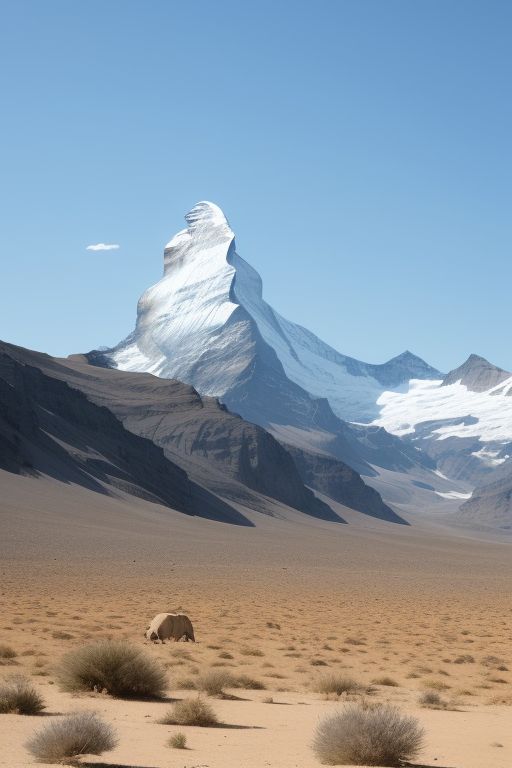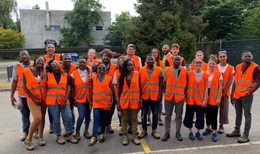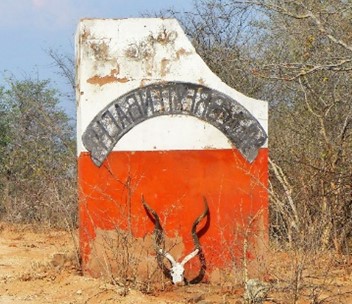
Past Natures for Future Conservation (PANATURE): Current Narratives and Historical Human-Wildlife-Land Relations in Southern Africa and the European Alps
Marie Skłodowska-Curie Actions (MSCA) Postdoctoral Fellowship
2024-2026
Conservationists often use ‘historical’ arguments to justify their visions of which groups of human and non-human species should live where and how. Imagined pasts are central to influential concepts and practices of conservation, such as re-wilding, species re-introduction or landscape restoration. These narratives range from vague references to past equilibriums, that need to be saved, to more specific baselines of past distribution of certain species, that need to be restored, to the re-creation of specific past landscapes in new settings. Historians have hardly contributed to these historicized arguments. Following recent calls for conservation humanities, I apply historiographical methods to engage with conservationists’ ideas of past human-wildlife-land interactions and practices in Southern Africa and the European Alps.
Firstly, I analyze, contextualize and compare how conservation organizations use imagined past human-wildlife-land relations and develop a typology of historical conservation narratives. For example, in Southern Africa, conservationists present “Africans” often as naturally knowing how to live in their environment or as a threat to nature. In Europe, conservationists’ narratives present historical people as experts or masters of nature. Secondly, I research specific historical moments in both regions, to juxtapose conservation narratives with localized analyses of historical changes in human-wildlife-land relations. Thirdly, by combining critical historical analyses of cases in Southern Africa with those of Europe, I challenge powerful conservation narratives that often perpetuate unequal (global) power structures.
PANATURE is based at the Global South Studies Centre of the University of Cologne, in close collaboration with the University of Namibia and other partners in Southern Africa, Switzerland and Austria.

The elephant and the tsetse fly: Animal crossings in a Southern African borderland, c.1920-2000
DAAD PRIME Project
2022-2024
My project deploys a multi-species, more-than-human environmental history approach to investigate how changing (post-)colonial borders interact and redefine species boundaries, conviviality and hierarchies. To do so, I examine historical cross-border movements of two specific species – elephants and tsetse flies – and how governments, conservation organizations and local people produced knowledge of and established control over such cross-border animal movements.
The project’s focus is on the border region of Angola, Botswana, Zambia and Namibia in the 20th century, where borders have turned from loosely defined boundaries of colonial influences, to being closely controlled and militarized cold war borders, and eventually to forming part of one of the Kavango-Zambezi Transfrontier Conservation Area (KAZA TFCA). The project focuses on two species, that both have been of central concern to colonial and postcolonial governments throughout the 20th century: the elephant, one of the flagship animals of Southern African wildlife conservation, and the tsetse fly, a species that transmit human and animal diseases.The project follows two core fields of investigation: It retraces historical cross-border movements of animals and it investigates how the control of borders and cross-border movements of human and non-human animals was interlinked with the establishment and definition of hierarchies of and between different species – from pests and vermin to royal game and charismatic animals.
For his DAAD project Lenggenhager will be based at the Global South Studies Centre (GSSC) of the University of Cologne and will spend several months at the Global History and Culture Centre (GHCC) at University of Warwick and the Okavango Research Institute (ORI) of the University of Botswana.

Swiss-South Africa Joint Research Project SNSF
2017-2022
Space in Time was an interdisciplinary joint research project between the University of Cape Town, the University of Namibia and University of Basel, bringing together scholars from geography, history, and environmental science. The project’s geographical focus is the lower !Garib (Orange River) in the South African/Namibian border region, the historical Namaqualand. The area is currently experiencing a new chapter in a long and complex history of changing land use and resource management.
Increasing global economic integration as well as apartheid-motivated delimitations of commercial farms and labour reserve economies have most prominently influenced land use and the social organisation of society in the region. Currently, large-scale agriculture and nature conservation projects dominate land use in this post-apartheid cross-border region. These large-scale projects are contested by those who claim their own rights to land and land use, among them formerly disadvantaged and often very poor communities living along the river. Given its diverse history and the often conflictual articulation of multiple land claims, the region provided an ideal starting point for an analysis of different narratives around land use and management. Placing these narratives in a broader historical and socio-political perspective furthermore allowed for a more balanced discussion of land use that aims to transcend some of the antagonisms between the various stake holders, local, national and international ones.
The project led to several individual publications, and in 2023 an edited volume will be published and a traveling exhibition is in the making.

Supported by Stiftung Mercator Schweiz and Greenleaves Foundation
2019-2022
The project “Learning for (Ex)Change” develops and implements innovative forms of international collaboration in teaching among universities from Switzerland and Namibia. Over a period of four years (2019-2022), two excursions will take place each summer – one in Namibia and one in Switzerland. The first Winter / Summer School took place in 2019 in Oranjemund, Namibia and in the Appenzellerland in Switzerland, under the title „Structural Change in Semi-Urban Regions in Namibia and Switzerland“. The second edition took place in early 2022 under the topic „Rural Development“ in the Beverin Nature Park (Graubünden, Switzerland) and in Mariental in Southern Namibia. The third edition under the topic „Migrant Labour“ took place in June/July 2022.

Ruling Nature, Controlling People: Nature Conservation, Development and War in North-Eastern Namibia since the 1920s
PhD Project at the University of Zurich
2011-2017
My dissertation illustrates how the escalating militarization and internationalization of political conflicts in the Caprivi Strip (today Zambezi and Kawango-East Region in north-eastern Namibia) became increasingly interwoven with projects of nature conservation and ecology as well as with narratives of economic development from the 1950s onwards. Such interdependencies offer a novel angle from which to view the history of a region, which has hitherto barely entered the focus of historical research. They also highlight the importance of the supposedly peripheral Caprivi – and its military, scientific and environmental histories in particular – for understanding the ways in which apartheid South Africa exerted state power. The dissertation reveals how the South African government legitimized its occupation of Namibia with reference to narratives of economic development devised to ensure the loyalty of the Namibia population and to justify the military occupation to a South African and international public. In the Caprivi, starting from the 1960s onwards, such narratives increasingly invoked projects in the fields of forestry, fishery and, later, wildlife conservation. I further discuss more recent nature conservation initiatives, which impact the region today, such as communal conservancies and transfrontier conservation areas (Peace Parks), and show how these are also often characterized by economic development discourse, ecological research and, increasingly, militarization and violence. My dissertation contributed to two important theoretical debates. The first concerns the place of development discourse in South African policy at the supposed peripheries of the apartheid state, including in the homelands and in Namibia. The second tackles the extent to which military practices, nature conservation, and the production of ecological knowledge served Pretoria as mutually reinforcing means to exert its control over these supposedly remote regions. One of the major conclusions of this dissertation is therefore, that the imperatives of nature conservation, militarization and development have been intricately entwined in the in the Caprivi and beyond. This entanglement stems from their interlinked past, a history which continues to show its impact on the region today. I showed how, during military occupation, research on local nature as well as the exploitation and conservation of the natural environment became central means for apartheid South Africa to expand its power over northern Namibia. Finally, this dissertation offers an argument against conceptual confines, whether in the form of rigid analytical boundaries between supposedly separate spheres of politics, such as economic development, nature conservation and military power; nor in the form of circumscribed historical eras, like the apartheid and post-apartheid periods; nor in the form of neatly defined political-geographical-historiographical entities, such as Namibia and South Africa. To understand past and present nature conservation initiatives and policies in the Caprivi – or, indeed, more generally in Southern Africa – the dissertation thus calls for reappraising the relevance of conceptual boundaries and emphasizes the search for continuities and entanglements across different concepts and paradigms.